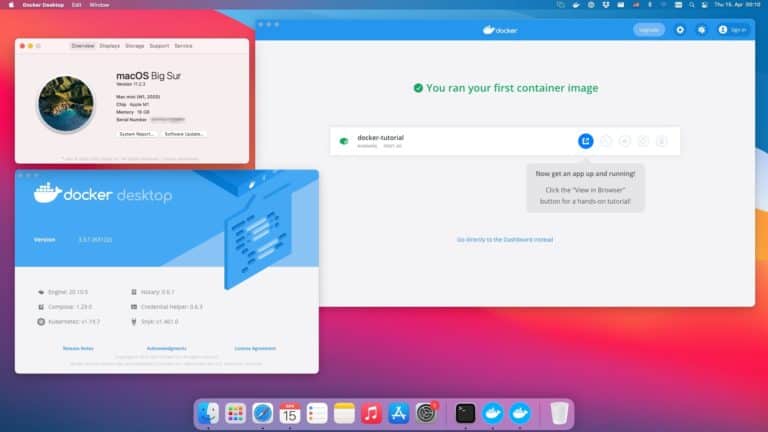Docker has made its development toolset Docker Desktop suitable for running natively on the M1 chip. This makes it possible to run Arm-based Docker images on the computers.
With Docker Desktop for Mac, developers can now build container images on the latest generation of macOS platforms that can run anywhere, writes Container Journal. This includes the cloud service based on AWS’ Arm-based Graviton 2 processors.
Containers remain valuable
According to Matt Carter, vice president of marketing at Docker, the update once again demonstrates the value of using containers to build applications. Developer skills remain relevant even as the underlying infrastructure continues to evolve. User interfaces, command line interfaces and APIs continue to work together in the development process. In addition, the software can now handle the nearly 90,000 images on Docker Hub built for Arm.
Rosetta 2 still required
The beta version of Docker Desktop for Mac has been available for several months. It has been installed 45,000 times, the company claims. The software can be downloaded from the Docker website. It still requires Rosetta 2 on the computer, as some binaries are still based on x86. This should be fixed in the future. Also, not all images are available yet for the ARM64 architecture, but it is still possible to run x86 containers with Rosetta 2 emulation. However, the company warns that, in certain exceptional situations, this can lead to crashes.
Apple switches to Arm
Apple released its first computers with its new self-designed Arm chips last autumn. The processors proved to be slightly faster but especially much more power-efficient than their Intel counterparts. However, in order for applications to run as well as possible on them, developers must modify their applications to run natively on Arm. For applications that have not yet done so, Apple has developed Rosetta 2 emulation software. This allows x86 applications to still run on the Apple Silicon M1 processor. However, this does introduce some overhead.
Parallels Desktop 16.5 on Apple Silicon
Earlier this week, Parallels also announced that it had made its Parallels Desktop virtualisation software suitable for the M1 processor. This now makes it possible to virtualise Arm versions of Linux, Windows or other operating systems on the new Apple computers.
